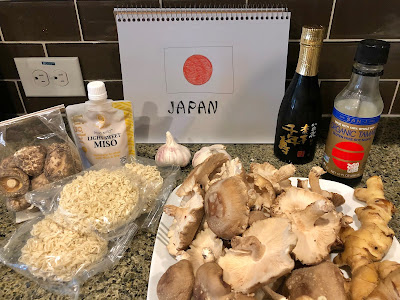 |
| !Original:Albert Hastings MarkhamVector: Zscout370, Hugh Jass, s. File history / Public domain. We decided that we'd abused enough of the flags of the nations we visited. |
Viewing
Given the challenges I'd had with the start of Japan's viewing, we decided to watch New Zealand's entries on the non-large screen. It's a good thing too, since we decided to watch New Zealand Road Trip, which was produced by the same person that produced our original choice for Japan. Luckily, the smaller screen, slightly better production quality, and a little less lightheadedness on my part made for a very enjoyable and informative session.The road trip explored both the North and South islands, and there are some (actually, a LOT) of magnificent places on both. In the end, I think if we had to choose one, we would opt for the South island. There is SO much to see and do, and while a lot of it would be a challenge for Tanya and I right now, there are also a TON of day hikes to places that are just this side of unbelievable. All of those places in Lord of the Rings -- they're actual places, and most of them are easily visited.
The most notable exception is Mt. Doom (Mount Ngauruhoe in real life). From the documentary, it seemed like the hike was at least 19km, and that did NOT include an unassisted ascent to the peak. It's completely optional, of course, but when you see Frodo and Sam slipping and sliding and struggling up the face of the mountain, that wasn't dramatic effect. It's *just like that*, so approach with caution.
One of the most astounding things that was pointed out about New Zealand is that it's larger than the UK. In fact, the host suggests that the South island is about the size of Britain itself, but only has a population of about 1 million people. That means that not only are you surrounded by rugged and refined wilderness of all sorts, you're unlikely to run into very many people. Take that as you will, but given we don't like tons of crowds, this is even more appealing to us.
A few other things that were mentioned or seen in the documentary that piqued our interest:
- Weta Workshop: For those of you that are interested in movie making magic, and LotR in particular, you should make time to visit this place. They're a special effects and props company, and were responsible for quite a bit of the exotic panoply featured in the films.
- Black Water Rafting: I didn't have any idea of what this was until he described it. You take a boat (or tube!) ride through a cave whose ceiling is covered in glowworms. The host described it as being like floating through space. That's something I'd definitely like to do.
- Mount Cook: Mount Cook is the tallest mountain in New Zealand, and the national park around it is astounding. Everywhere you look is idyllic, and it seemed very accessible.
- Driving around: no link here, but New Zealand looks like a place where you would benefit from being shown around (via something like the Kiwi Experience). Eventually, however, you'll want to just go exploring, and you should. Be sure to get a four-wheel drive vehicle, however, as unexpected weather tends to cause unexpected road outages, and there will be places you want to visit otherwise that would benefit from a more rugged/able vehicle.
Tasting
We decided to go light on food, given how heavy we've been all week. As such, the featured delectable from New Zealand is the unusually named Afghan Biscuit. |
| A little bit of sugar, a little bit of... corn flakes? |
 |
| Rounded scoops slightly flattened. |
 |
| So, SO tasty! |
We also picked up a nice bottle of Sauvignon Blanc from a New Zealand winery. If you didn't already know, New Zealand has a large wine industry. In fact, you can go on an extensive, all day wine tour on the North island at least (if that's the kind of thing you like).
Conclusion
The cookies and wine were a very nice end to our day in New Zealand. It was a lot more relaxed that the others, which was exactly what we wanted (and needed -- SO MUCH COOKING AND CLEANING involved for the other places). And the documentary was such that our desire to go to New Zealand remained the same. With luck and determination, we'll get there someday!And this was the end of our virtual vacacay experiment. I'm very glad we did it. Despite not being able to travel, everyone needs to make sure you take time away from work to unplug/decompress. Given our experiences with this experiment, I highly recommend it. Think about places you want to go or things you want to see, and why they appeal to you. Do a little research, and bring as much of that place to you as you can. It's certainly not the same as the real experience, but it's a pretty fantastic way to spend a week not working! :-)














